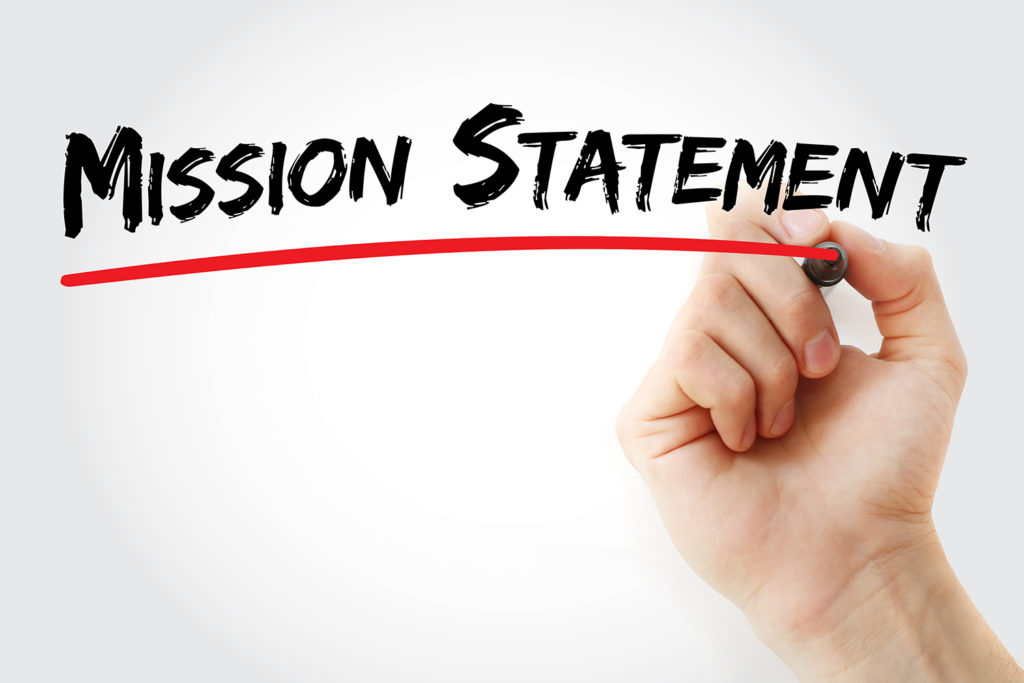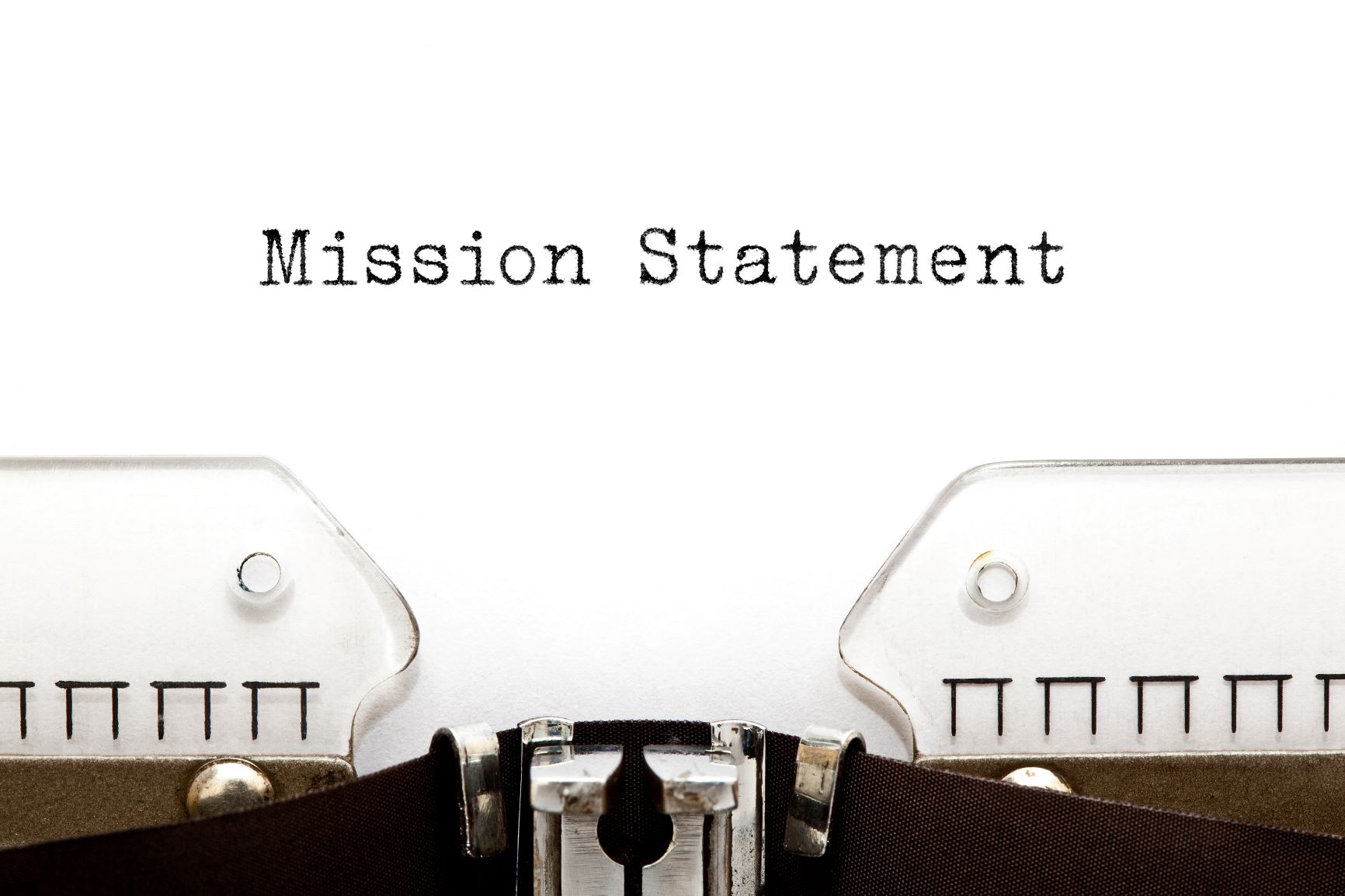
Writing a nonprofit mission statement can feel like an intimidating task.
How do you sum up your organization’s work in a single sentence?
Well, good news! A nonprofit mission statement isn’t supposed to include everything you do.
The goal is to capture the essence of your organization’s work.
You see, your mission statement is your organization’s soul in the form of a strong action verb and few other carefully chosen words.
It needs to be short, spicy, and easily understandable.
Unfortunately, most nonprofits have long, verbose mission statements that pack in every single thing they do, using lots of long words and jargon.
You know who understands those? No one.
That means their mission statement isn’t working for them.
So, let’s talk about what a good mission statement looks like so you can make sure yours is working for you.
Good Nonprofit Mission Statement
One of my favorite mission statements came from a nature center that had expanded its role in the community.
The organization needed a new mission statement to better identify its work and guide its future.
But the statement didn’t need to be longer or more complex to acknowledge the nature center’s larger footprint.
Instead the mission statement shrank down to a mere five words:
We connect you with nature.
The nature center may have introduced new programs, expanded its staff, and launched a multi-million-dollar capital campaign, but the essence of the organization remained beautifully simple. Everything the center did connected people—all people— with the natural world.
Crafting a good nonprofit mission statement forces you to examine your organization’s purpose at its core and then mine the English language for just the right words to convey that purpose in as few words as possible.
Actually, your mission statement should pass the T-shirt test. If I walk past you on the street and your mission statement is on your T-shirt, can I read it? And get it?
If not, you’ve got some work to do my friend!
You see, your mission statement has a job:
- Keeps you focused and moving forward, engaging in programs that fulfill your mission while avoiding mission creep.
- Motivates and inspires the Board, staff, and volunteers.
- Tells the public clearly and succinctly what your nonprofit does and how you are making the community better.
Unfortunately, many nonprofits have a mission statement that is vague and full of jargon, one that leaves people wondering what the nonprofit really does. This ambiguity can limit your ability to raise money and attract supporters.
Here’s an example I stumbled across recently:
To inspire hope and promote positive change through the narratives that connect us to one another.
Hmmmm … I had to keep reading to determine what this organization actually did. It turns out they produce plays, but their mission statement doesn’t say anything about plays.
Another head-scratcher I saw recently:
We work to remove barriers to success so people in marginalized communities can own businesses and thrive.
Sounds good, but what do they actually do? Further research revealed that the organization does economic development work while training people in the community in entrepreneurship. Here is how I would state the mission for greater clarity: We train people in entrepreneurship and provide access to capital to open small businesses.
Just state what you do!
What Makes a Strong Mission Statement

A strong nonprofit mission statement is:
- Short. With enough brainstorming, most organizations can create a single-sentence mission statement.
- Clear. State what you do without over-explaining.
- Direct. Name the problem your organization works to solve, the reason your organization exists, and the people or animals you help.
When a nonprofit mission statement is a long, word-packed, compound-complex sentence or goes on for three or four sentences, the problem is often a lack of clarity around the mission. What problem are we here to solve? Why do we exist? Who are we here to help?
Often people involved in an organization have different answers to these questions, and a long mission statement reflects a desire to include everyone’s perspective.
Instead of packing your nonprofit mission statement full of words, work on getting everyone to a consensus on why the organization exists. Then work on the words of the mission statement.
Choose the right words to convey your organization’s purpose in a concise, memorable, and inspiring way.
10 Examples of Strong Nonprofit Mission Statements
Examples of strong nonprofit mission statements are easy to find.
Look up the organizations you admire, and there’s a good chance you will find strong mission statements.
The best nonprofit mission statement isn’t the shortest or the most creative. It’s the one that tells a person who doesn’t know anything about your organization what your organization does.
Here are some examples of strong mission statements:
- We thoughtfully guide and fiercely support wonderful students to and through college.
- We rescue, protect, and find loving homes for stray and neglected cats and dogs.
- We work to end the cycle of homelessness for families in our community.
- We feed the hungry today while building a healthy, hunger-free tomorrow.
- We unite our community to nourish our neighbors in need.
- We empower young adults to overcome poverty and build a brighter future for Haiti.
- We distribute donated furniture to families and individuals, turning their houses into homes.
- We provide love, care, and shelter for cats while they wait for families of their own.
- We give Black girls opportunities to learn, create, and believe they can become STEM professionals.
- We advocate for the best interests of abused and neglected children who are under protection of juvenile court.
A Process for Writing Your Nonprofit Mission Statement
Writing your nonprofit mission statement should be done with thought and purpose.
Take the time to get it right and involve your stakeholders in the process.
But be careful – if you involve too many people and wordsmith your mission statement to death, you may end up with a statement full of jargon and too many ideas.
Here is a strategy for writing a mission statement for the first time or revising the mission statement you already have.
Gather your group: Pull together key people, including Board members, staff, volunteers, and people who received services from your organization. Keep the group small, just six to eight people. Make sure your group represents a variety of perspectives and experiences. Consider hiring a consultant to facilitate the process.
Brainstorm ideas: Start by brainstorming what you want your organization to do going forward, assuming no limits on funding and staff. Don’t just focus on what your organization currently does. Think beyond the boundaries that exist. What would you do to solve the problem or address the unmet need that your organization was founded to address?
Use a flip chart or sticky notes to gather everyone’s input. Get started with these questions:
- Who will we serve?
- What problem will we address or solve?
- What will our organization look like when we succeed?
Create some rough drafts: Use this format: We [action verb] [who] [why].
For example, a food pantry might come up with sticky-note drafts such as:
- We provide emergency food boxes to people in need.
- We offer fresh produce and dairy to people in need.
- We make sure kids aren’t going hungry.
- We help seniors have access to fresh food.

The common thread is feeding people. Your mission statement might be: To provide food to everyone in our community who needs it, making sure that no one goes hungry.
Each of the ideas shared on sticky notes would be a program that supports the mission.
For the first word of your mission statement, some organizations like to start with to and then follow with a strong verb. Others like to start with Our mission is to. I prefer we for its suggestion that we’re all in this together.
All of these approaches are fine. But think twice before starting with a clause such as, In solidarity with our neighbors, we … These clauses weaken your statement. You make a stronger statement by getting right to the heart of what you do.
Finalize your draft. You probably won’t nail the mission statement on the first draft. The beauty of writing is that you get to revise! As you revise, think about each word and whether it is really necessary. Then think about the word and ask yourself if it’s the right word or if there is a more interesting, engaging, memorable, or inspiring word.
Process in Action – An Example of Refining a Mission Statement
 We provide food to everyone in our community who needs it, making sure that no one goes hungry.
We provide food to everyone in our community who needs it, making sure that no one goes hungry.
Which words can be eliminated? Well, that is often an unnecessary word. But could you eliminate that whole clause, making sure that no one goes hungry? Food for thought!
You may find that words like at-risk, low-income, marginalized, distressed, and impoverished help explain whom you serve. But you may also find that these words can be eliminated as they are stating what is already obvious. Food pantries are not providing food to people who already have pantries and fridges full of food.
Which words can be replaced with better words? Thesaurus.com is your friend!
We provide food … how about we nourish? Or we sustain? Or we feed?
Everyone in our community, how about our neighbors?
We nourish our neighbors, making sure no one goes hungry.
Is this it?
Going back to the sticky notes, could you fit in something about fresh food.
We nourish our neighbors with fresh, healthy food, making sure no one goes hungry.
Could you also capture the different age groups you plan to target?
We nourish our neighbors, from babies to seniors, with fresh, healthy food, making sure no one goes hungry.
Do you really need that last phrase?
We nourish our neighbors—from babies to seniors—with fresh, healthy food.
That’s a strong mission statement!
To reiterate the key points in crafting a strong mission statement:
- Use simple words. Accurately describe what your nonprofit does without jargon and fancy words.
- Be specific. A broad or vague mission statement won’t help you attract support. An example of a vague mission statement: We serve impoverished people, empowering them to reach their potential. This statement could apply to so many nonprofits! Don’t be afraid to tell people what your organization does that is special.
- Be concise. Aim for less than 20 words. Shorter is better.
What About a Vision Statement?
Most organizations benefit from a vision statement as well as a mission statement.
It’s easy to get the two confused, but once you understand the difference and go through the process of writing a mission statement, the vision statement should be easy to create.
A vision statement articulates where you are headed, your future, the target in the distance that you are aiming for in everything that you do. The vision statement expresses the overall goal of your nonprofit.
A mission statement is what you are doing now, in the present, to reach the goal in your vision statement.
For the hunger-relief organization in the example above, the vision statement might be: To eradicate hunger in our community.
One organization alone cannot wipe out hunger, but the vision statement illuminates your ultimate goal. If you don’t believe hunger can be eradicated, how long before you burn out on feeding people day in and day out? If you remind yourself hunger can be eradicated, you will be motivated to work with community partners to address root causes.
Both a vision and mission statement are important for making sure your organization stays on track.
A vision statement is important, even if it seems brazenly ambitious, because the words keep you focused on your end goal. With a nonprofit, it’s easy to get mired in the day-to-day work of managing programs and lose sight of the ultimate goal.
Your mission statement is also important, even if it seems simplistic, because the words guide you as you go about your work, keeping you from wandering off course and trying to do too much.
And for practical reasons, you might need a vision and mission statement for grant applications. You should share both your vision and mission statements on your website so visitors to the site will know right away what you are all about.
Keep Your Nonprofit Mission Statement Fresh

Revisit your nonprofit mission statement every three to five years to make sure the statement still expresses what your organization does.
If your work has changed, the questions you need to ask are: Have we gotten away from the purpose we spelled out in our mission statement? Or has our vision led us in a new direction that now requires a new mission statement?
The process of revisiting your mission statement can be engaging for your team, giving everyone a chance to reflect upon the essence of your nonprofit’s work.
When people get a say in the mission statement, they have buy-in, which creates ownership. This can lead to a deeper commitment from those who take part in revising your nonprofit’s mission statement.
The Bottom Line
A clear, concise nonprofit mission statement lets the world know what you do, whom you help, and what problem you are working to solve. It’s the foundation of your messaging.
It becomes the basis of storytelling and fundraising for your organization, so it’s important to take the time to get your mission statement right.
Having the right mission statement goes a long way in making sure everything else you do falls into place.
Additional Resources
Classy has 10 killer nonprofit mission statements to learn from.
TopNonprofits has great mission and vision statement worksheets plus 50 examples you can peruse to kickstart your creativity.
Nonprofit Hub has a great look at good and bad mission statements.






I find that as organizations evolve, the mission statement often stays put until it no longer fits. Thanks for sharing – it’s a great reminder to check in with your mission statement regularly.
You’re so welcome Jason. Glad this was helpful for you.
[…] Mastering the nonprofit mission statement is critical toward a best first impression. With a clear, concise, and powerful message, your organization stands to benefit by communicating its unique perspective to the world. It all hinges on — and starts — by beginning the conversation. […]
Great Tips!
Thanks for sharing.
I read this blog. This blog is very interesting.
Please make a post on How we can increase donors for the charity registration
See if this is helpful: https://getfullyfunded.com/7-fundraising-ideas-to-cover-startup-costs-or-special-projects-for-your-small-nonprofit/
Quite encouraging!
This is important for new nonprofits to know. A mission statement is important, but often overlooked.
In one or two sentences, your mission statement sums up the essence of your organization. A nonprofit’s mission statement is an expression of its core values and purpose. It tells your audience what you do, how you do it, and why.
That’s exactly right!